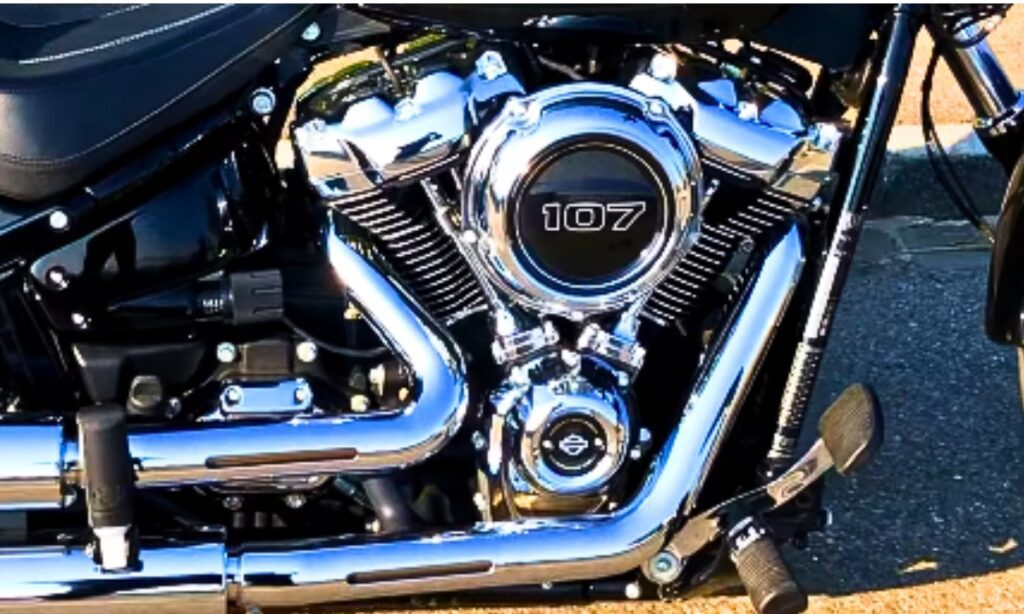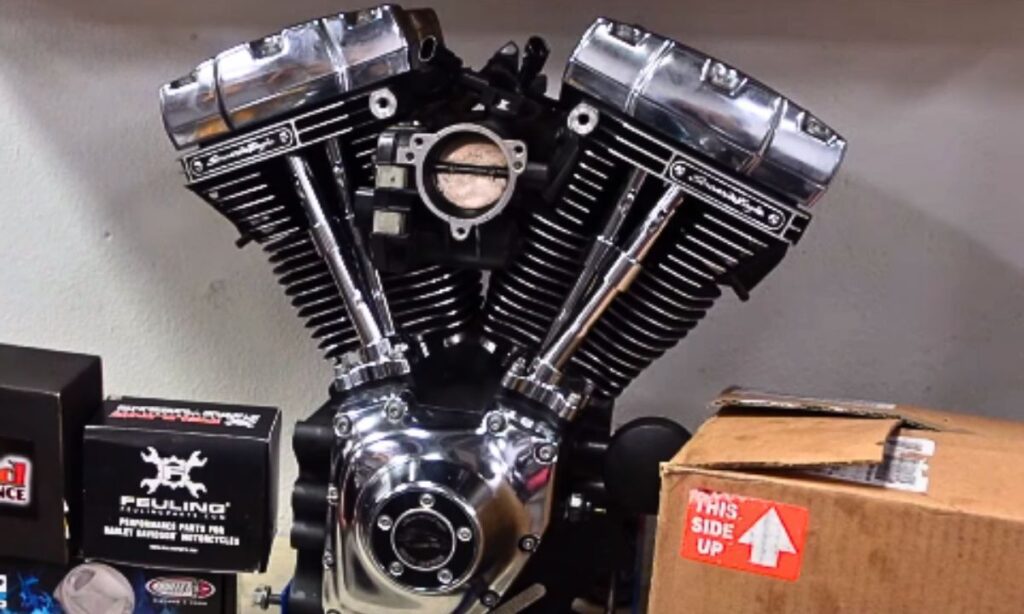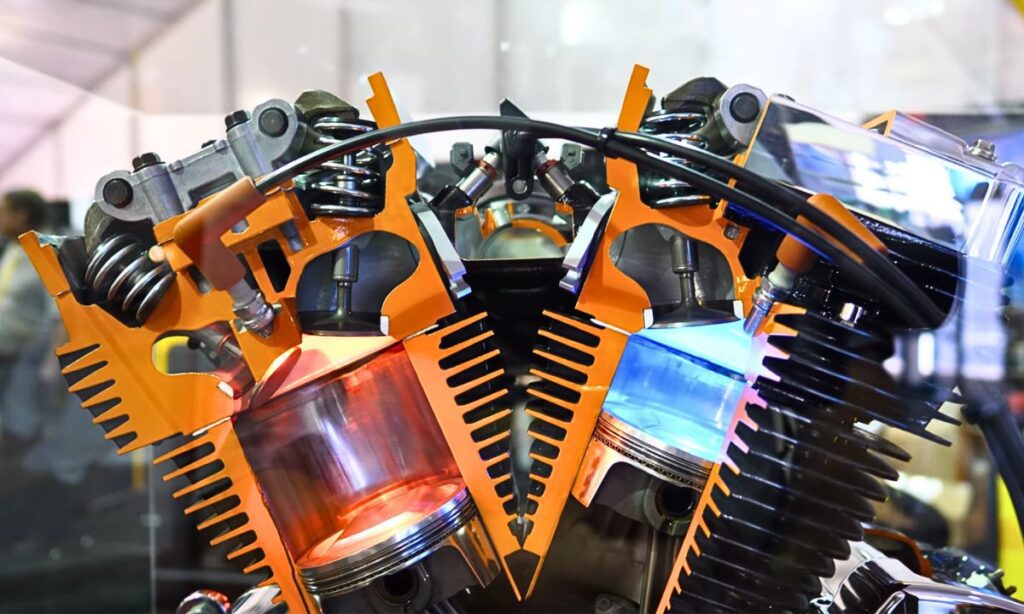I remember the thrill of getting my first Harley, the roar of the 107 engine as I took to the open road.
It was a dream come true until I started noticing some odd sounds and performance issues.
Little did I know, I was about to get really familiar with some common problems with my Harley 107.
From pesky oil leaks to temperamental electronics, each challenge was a learning opportunity. Let me share my story and what I’ve learned along the way.
Harley 107 Problems
The common problem with the Harley 107 engine is Excessive Oil Consumption.
Oil Pump Issues, Vibration, Wet Sumping, Oil Aeration, Cam Chain Tensioners Issues, Flawed Crankshaft, Overheating and Cold Starting.

1. Excessive Oil Consumption
Excessive oil consumption is the most common issue that is faced by many owners.
It can be a concerning issue for riders, resulting in an unexpected reduction in oil levels that may lead to engine damage if left unattended.
This problem might stem from several factors, such as leaky seals, worn-out piston rings, or even the misuse of oil types not suited for the specific demands of a high-performance engine.
Riders noticing oil levels dropping faster than usual should first check for any visible leaks around the engine, and if none are found, consider the engine’s internal health, specifically the condition of the piston rings and valve seals.
The solution often involves a meticulous process of eliminating potential external leaks and then, if necessary.
For careful and detailed guidance, it is advisable to consult the service manual specific to the model or, better yet, seek assistance from a qualified Harley mechanic.
2. Oil Pump Issues
One of the common issues that Harley 107 riders encounter is a malfunctioning oil pump, which can lead to inadequate lubrication and, consequently, increased engine wear or failure.
Insufficient oil flow can cause the engine to overheat, leading to a decrease in performance and potentially severe damage.
To address this problem, it is essential to check the oil lines for any blockage and ensure that the oil filter is clean and properly installed.
If the oil pump itself is at fault, it might need to be replaced.
This process generally involves draining the engine oil, removing the outer covers, and carefully replacing the oil pump.
Using only high-quality replacement parts and ensuring that everything is sealed and aligned correctly can help prevent future oil pump issues.
3. Vibration
Owners of Harley 107 have reported experiencing excessive vibration that can lead to discomfort during rides and potentially exacerbate wear and tear on the bike’s components.
This issue is most noticeable at high speeds and during longer rides, where persistent vibrations can cause numbness in the hands and feet, detract from the riding experience, and even loosen various nuts and bolts.
To address this, a detailed inspection should be conducted to pinpoint the source, which may include checking engine mounts for proper tightness, ensuring the balance of internal engine components, or looking into the alignment of the chassis.
If the problem persists, consult with a certified mechanic or visit a Harley dealership for a professional assessment.
Regular maintenance and inspections are imperative to mitigate vibration issues and keep the bike in optimum condition.
4. Wet Sumping
Wet sumping is a condition that occurs in Harley-Davidson motorcycles, specifically those with the 107 engine, where excess oil accumulates in the crankcase while the bike is not running.
The problem typically arises when the check valve in the oil pump fails, allowing oil to seep into the crankcase.
The result is a bike that may experience oil leaks, smoke upon startup, and reduced performance.
Riders also notice a significant amount of oil discharging from the breather tube when starting the engine after it’s been sitting for a while.
To remedy this issue, it’s essential to address the faulty check valve and ensure proper maintenance routines.
You can start by checking and, if necessary, replacing the oil pump’s check valve.
5. Oil Aeration
Oil aeration can lead to a slew of problems, including engine overheating, reduced lubrication, and potential wear and tear on the engine components.
The issue arises when air bubbles are mixed with the engine oil, usually due to the oil being churned too vigorously within the engine’s compartments.
This foam of aerated oil can diminish the oil’s effectiveness in protecting the engine, leading to increased friction and overheating.
To address this issue, it is advised to ensure regular maintenance of the motorcycle, which includes checking the oil levels and quality.
Using a high-quality oil suitable for the Harley 107 and replacing it on schedule helps to prevent aeration.
However, installing an aftermarket oil cooler can assist in maintaining optimal oil temperatures and reducing the risk of aeration.
Properly warming up the engine before high-speed operation and avoiding aggressive riding styles can also minimize this risk.
6. Cam Chain Tensioners Issue
One such problem that some Harley 107 riders encounter is with the cam chain tensioners.
Over time, these tensioners can wear out prematurely, causing excessive noise, reduced engine performance, and potentially leading to serious engine damage.
This wear is often due to the tensioner’s material not standing up to the stress of constant movement against the cam chain, which can lead to the engine running rough and, ultimately, failure.
To address this, it’s recommended that the cam chain tensioner is regularly inspected, especially during service intervals.
The ultimate solution involves upgrading to a hydraulic cam chain tensioner system, which is less prone to wear and provides greater reliability.
This can be done at most motorcycle repair shops or by following a detailed guide for those who are mechanically inclined.
Upgrading to a more resilient material, such as high-grade metal or a more durable composite, will ensure a longer lifespan and smoother running engine.
7. Flawed Crankshaft
This mechanical defect arises from improper alignment of the crankshaft, which leads to excessive vibration, eventual bearing wear, and potentially catastrophic engine failure.
However, this misalignment can cause a loss of power and a decrease in fuel efficiency, robbing the bike of its optimal performance.
To address and remedy this situation, it is recommended to take your motorcycles to a certified mechanic.
If a flawed crankshaft is detected, a complete crankshaft replacement or alignment may be necessary.
If you have mechanical expertise, purchasing a crankshaft truing and alignment tool and following it could allow for a more hands-on approach to solving the problem.
8. Overheating
Overheating is a notable issue among Harley 107 engines, particularly during long rides or on hot days, which can lead to engine performance degradation.
The problem results in excess heat buildup in the engine, and symptoms may include increased engine temperature readings, power loss, or knocking sounds.
Over time, excessive heat can damage integral engine components, posing a serious concern for riders.
To fix this issue, properly maintain regular oil changes with high-quality lubricants, ensure the cooling system is functioning optimally, and inspect the engine for any signs of wear.
However, installing an aftermarket oil cooler can be a beneficial upgrade.
These devices increase the cooling capacity of your engine, thereby reducing the operating temperature.
Riders should also consider investing in a tuner that optimizes the engine’s performance to run cooler.
9. Cold Starting
One common issue owners have encountered is difficulty with cold starting.
This problem often presents itself as a sluggish or delayed start when the engine is cold, or in some cases, the engine might not start at all.
Contributing factors can include a weak battery, poor fuel quality, or a malfunctioning starter.
However, the most frequent culprit tends to be a compromised battery that is unable to deliver adequate power for starting after a night of disuse.
To address this, ensure your Harley’s battery is fully charged and in good condition.
Use a battery maintainer during longer periods of inactivity to keep the battery at optimal levels.
If the battery is in good shape but the issue persists, inspect the fuel system for any signs of old or contaminated fuel that may hinder engine ignition.


Talha Younas, the brains behind the influential motorcycle-focused website, TwoWheller.com, is a dedicated and passionate advocate for biking culture. Born and raised in a family of motorcycle enthusiasts, his love for two-wheeled transportation was ignited at an early age. His commitment to providing in-depth reviews and helpful tips for riders has established him as a respected figure in the motorcycle community.

